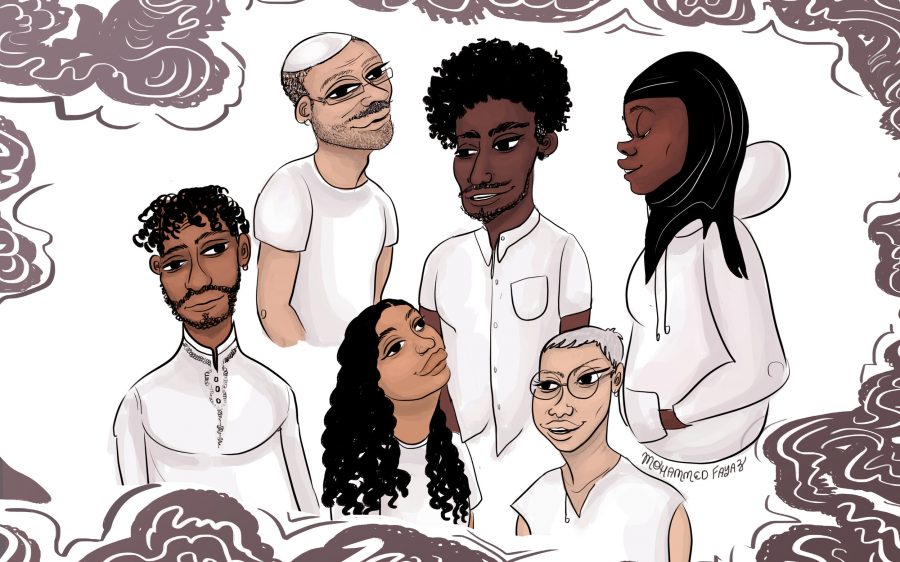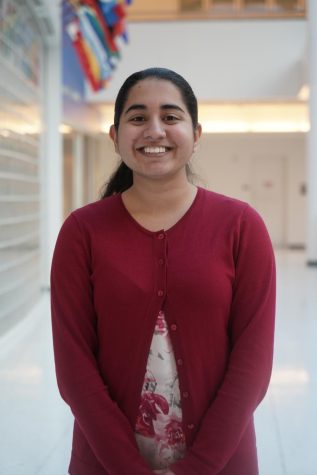Muslims in Brooklyn amplifies unheard voices of the borough
November 4, 2019
In a nation built on Puritan beliefs, non-Western cultures and religions appear to be outliers.
Stigmas and stereotypes influence the perception of them, making them something to be feared, hated or embarrassing.
With this in mind, African American Muslim artist, Kameelah Janan Rasheed, created Muslims in Brooklyn in the Brooklyn Historical Society meant to answer what it really means to be a Muslim and to “break down the false and dangerous stereotype of Muslims as foreign ‘others.’”
The exhibit, An Opening, is the English translation of Al-Fatiha, the first surah of the Quran as well as the first prayer recited when praying namaz or salah. Hence, it is the opening prayer.
As revealed in the exhibit, Rasheed chose this name as she sought for the exhibit to be an eye-opening experience for non-Muslims to see that Muslims are like any other human being. In the hallway leading up to the exhibit, a wall explains how Muslims came to Brooklyn.
Some families had ancestors who were Somali, Sudani or Yemeni sailors that docked in Brooklyn and converted to Islam.
Other families came after World War II, enticed by communities made up of Muslims from Iraq, Egypt and Palestine. More Muslims arrived in 1965, when Congress banned the Immigration and Nationality Act, “which abolished quotas that had previously prevented immigration from predominantly Muslim countries.”
As history meets the present, the hallway leads to a room dedicated to depicting Muslims’ current lives in Brooklyn.
Upon entering the small room, a viewer is handed a headset and a phone. Each wall has small pieces of paper either written in Arabic or English translations of the Quran.
The room gathers valuable sources of oral histories from Muslim Brooklynites that the historical society sought to build up after realizing this perspective was missing from their records.
There are square black pieces of glass with white strokes of paint that have something written related to what each interviewee said. The reflective glass makes the listener feel transposed into the story, as though they are interchangeable with the speaker.
When the phone is pointed at any wall of the exhibit, one among the myriad of Muslim interviewees begins to share their story. It is incredibly intimate, as it makes it as if every person is specifically talking to you.
Each story is compelling and specific, such as voicing how Muslims have impacted drug usage in Bay Ridge.
Recalling a time in 1989, Siraj Wahhaj spoke about how he and his affiliated mosque, Masjid At-Taqwa, got permission to paint their mosque and the rest of their block green, and made it clear, “You can’t do anything negative in this area here.” As a result, they aided in closing 15 crack houses.
Rasheed not only depicted Muslims’ positive impact on society, but the struggles they endure as well. For instance, for parents immigrating to the United States, their children are swept up in Christmas festivities.
Muslims do not celebrate Christmas, though some families choose to put up lights or exchange presents for younger children. One perspective voiced by interviewee Alyssa Haughwout was that her parents “…got a Christmas tree because that was American,” and not rooted in religion.
The unique interplay between religion and culture begin to be blurred as there isn’t a distinct barrier for many people in the United States. It is made clear that although Muslims are united by a common religion, Muslims each retain their cultural identities.
This exhibit touches upon the fact that not all Muslims are South Asian. There are tales from Puerto Rican Muslims, African American Muslims and Afghani Muslims. The only difference between each Muslim is their culture, as each can speak to their love for Islam.
The impact of this exhibit is monumental. Living in a post 9/11 society, stories about Muslims being targeted have become so common that they are no longer front page news.
“More than 500 potentially anti-Muslim incidents [reported] in the U.S. since the start of the year. And that’s probably a low estimate,” according to the DailyBeast.
With the current administration’s use of anti-immigrant and anti-Muslim rhetoric, going as far to impose a Muslim travel ban, Rasheed’s exhibit sheds light on the fact that Muslims should not be feared; they are a part of Brooklyn and of America, that listens to hip-hop, that participates in Girl’s Scouts and takes karate at the local dojo.
Ultimately, Rasheed succeeds in depicting that Islam means peace and creates a serene environment for all New Yorkers to learn more about their Muslim neighbors.








